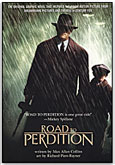
April 16, 2024


Comic books are as much a part of childhood as bubble gum and detention, but in the era of the Internet and high-definition video games, the joy of following your favorite superhero--cell by illustrated cell--has been in danger of going the way of the milkman.
 |
"The term ´graphic novel’ has been around for at least 20 years," said Robert Scott, owner of Comickaze Comics and Card Store in San Diego and founder of the Comic Book Industry Alliance. "What it had meant in our industry was a new story that hadn´t existed in serialized form."
 |
 |
In targeting different demographics, graphic novels tend to showcase a different type of story as well.
 |
"They´re not so much a new phenomenon, but they are really starting to find their own way and are really growing exponentially," said Michael Doran, marketing communications director at Marvel Comics. "I can tell you at Marvel our trade paperback division grew well over 200 percent from 2001 to 2002. We are expecting that to continue."
"The most important thing is that comic books are a medium, not a genre," said Lyga. "Comic books have won Pulitzer Prizes. Comic books have been made into Academy Award-nominated films."
Prominent among graphic novel film adaptations is Road To Perdition, a work that highlights the genre´s appeal to a varied readership. Where the audience for traditional comics is usually kids, graphic novels can involve stories with violence and nudity.
"We run into some material that certainly doesn´t suit the juvenile market," said Scott. "A lot of that goes to the comic publishers because they haven´t got into cover identifiers like the book market."
"The most important thing to remember is that comic books aren´t necessarily just for kids," Lyga noted. "You don´t take your child to an R-rated movie. You don´t give your child a comic book that has mature subject matter."
Independent comic stores face the challenge of displaying the smaller, thicker works as traditional bookstores do, while large book retailers are searching to find a place for this non-traditional format on their shelves. Publishers, too, have had to adjust their business approach, and not without some risk.
"When you sell to the bookstores, it´s returnable stock," explained Scott. "You might deliver 200,000 copies to the bookstores, but if you get 190,000 of that back, you are going to be in trouble. When you sell to the comic book stores, you might only sell 30,000 copies, but they are all paid for."
"There certainly is a different ordering cycle than with direct retailers," agreed Doran. "Because the bookstore interest is growing, our print runs are growing."
While mass merchandising might suggest only the more commercial stories will make it to print, Doran believes that may not be the case.
"Some of our more experimental stuff ended up having a more enthusiastic reaction in the bookstores than in the direct retailers," he said. "The bookstore market is a little more broad, and some of the stories that didn´t do well in the direct market have done really well in bookstores."
Doran believes the future is bright for the industry, its success driven by the expansion of the graphic novel.
"Kids are the prime audience we want to reach and probably the most difficult audience for the industry to reach over the years," he said. "You have to learn to read a comic book. It´s not a static experience. Your imagination fills in the gaps between the panels. Comic books are never going away. It´s a matter of getting kids in front of them. The good news is we seem to have bottomed out, and we seem to be on a good way back."
From the standpoint of the independent retailer, Scott believes there is still room for growth but predicts a minor crisis coming soon.
"A year to 18 months out, there will be a problem with a product glut," he predicted.
"Everyone is rushing to the collected series,” Scott said. “A lot of it justifies it. A lot of it doesn´t. It hasn´t reached a critical mass yet, but it will soon. Stores will have to decide what to carry and what not to carry, what to order as perpetual stock and what to order as a special series."
Copyright © 2024 TDmonthly®, a division of TOYDIRECTORY.com®,
Inc.